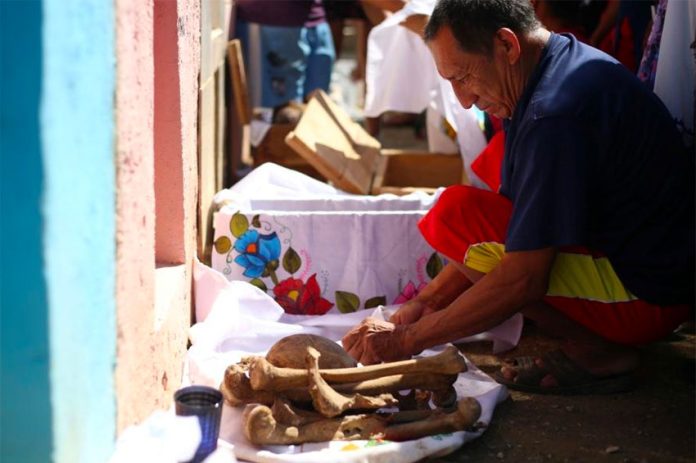It’s almost November, which means the eye-catching color of marigolds and the smell of copal and pan de muertos (bread of the dead) are here to herald the coming of the Day of the Dead.
This Mexican tradition, with its roots in pre-Hispanic indigenous cultures and mixed with the syncretic imagery of Catholicism, has become more popular in recent years, both with tourists looking for authentic experiences and Mexicans attempting to preserve a custom seen as being threatened by Halloween.
If you’re looking for a place to celebrate the festivities this year, here are seven recommendations.
Yucatán
The influence of Mayan culture in Yucatán is so profound that the people here have their own name for the Day of the Dead: Hanal Pixán, which means “food of the souls” in Mayan.

The first day of the festival, celebrated on October 31, is called Hanal Palal and is dedicated to children who have passed. The second day, Hanal Nucuch Unicoob, is dedicated to adults who have died. And the third, called Hanal Pixanoob or the Pixán Mass, is dedicated to all the saints. It is on this night that people gather in the cemetery.
Like Day of the Dead elsewhere in Mexico, people here set up elaborate altars on their patios and family tombs. They decorate them with flowers, tree branches, candles and pictures of their lost loved ones.
Pomuch, Campeche
The inhabitants of Pomuch have one of the most unique Day of the Dead rituals in the country. In the first days of November, they clean and prepare the bones of their dead family members while they pray, sing or simply talk to them.
Although the ritual may seem extremely personal, hundreds of visitors make their way to the cemetery in Pomuch each year to observe the cleaning of the bones.
Oaxaca
Oaxaca is a state so rooted in tradition that there is no way it could be left off of this list. This year, authorities have announced some 300 events in the state, mostly in Oaxaca City and the surrounding villages.
This year’s flagship event is the altar at the State Folk Art Museum in San Bartolo Coyotepec. There will also be fairs to celebrate artisanal bread, chocolate and other foods, and an extra-large Oaxacan parade called a comparsa in the streets of Oaxaca City.
Pátzcuaro, Michoacán
Pátzcuaro and the nearby Isla de Janitzio are two of the most popular places in Mexico to experience the Day of the Dead. Hotels are booked months in advance, and even those who book early sometimes find their reservations cancelled a week before the festivities because hotels can charge such high rates.
The cemeteries here were the inspiration for the Disney Pixar film Coco. Even the fishermen who take visitors across Lake Pátzcuaro to the island decorate their boats with altars to the dead.

Aguascalientes
Aguascalientes has celebrated the Day of the Dead with its Cultural Festival of Skeletons since 1994. The festival runs from October 25 to November 3 and features concerts, food fairs and folk art exhibits and sales. The main event is the skeleton parade, which clatters through the streets on November 1.
Veracruz
Called “Xantolo” in Veracruz, Day of the Dead is one of the most important festivals in communities in the north of the state like Pánuco, Tempoal, Tantoyuca, Platón Sánchez and El Higo, a region known as La Huasteca.
The inhabitants march through the streets in costumes representing old people, with wooden artisanal masks and cowboy outfits or their heads covered with large colorful scarves.
Chinahuapan, Puebla
Located in Puebla’s northern sierra, Chinahuapan is where people gather around a mythical lagoon in the middle of town. Here they hold the Festival of Light and Life, an event featuring fluorescent lights, actors, rafts, fireworks and a floating pyramid guarded by skeletons.
Source: Milenio (sp)
